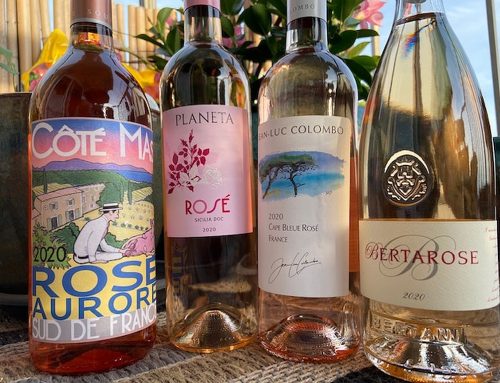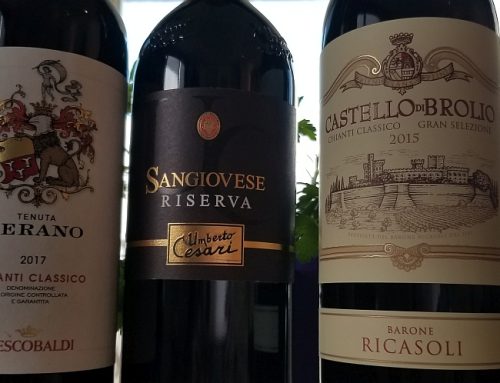Today I’ll give you two white wines, one to start the dinner and the other to finish it: Ceretto’s 2009 Arneis Blange and 2009 Moscato d’Asti.
For 80 years, the Ceretto family has been making wine in Langhe section of Italy’s Piedmont region. Langhe comes from the Latin word for “tongue,” like the long, narrow shape of this area.
Ceretto is famous for its Bricco Rocche Barolo and Bricco Asili Barbaresco; it also produces top-flight Brunate and Prapo Barolos and Bernardot Barbaresco. But if wine consumers focused only on those prestigious names, they would be missing out on the pleasures of Ceretto’s white wines.
A few months ago, Roberta Ceretto visited New York and poured a selection of her family’s wines. While the 1999 Bricco Asili Barbaresco and 2004 Bricco Rocche Brunate Barolo were as impressive as those single-vineyards wines always are, it was the freshness of the white wines that sparked my palate.
The 2009 Ceretto Arneis Blange is made from the arneis grape, grown in vineyards located in various areas of the Langhe, the most important of which is the Monsordo Bernardina estate in Alba.
It once belonged to the King of Italy, Vittorio Emanuele; the Cerettos produce four red wines and their Arneis Blange at the property.
The wine is 100 percent arneis and made in temperature-controlled stainless steel tanks. It is fermented, aged in the tanks for three months and bottled. The fresh pear and apple blossom aromas and fruit flavor are instantly appealing. Mild acidity keeps the wine balanced and centered on the savory fruit.
When Ceretto made its first arneis wine in 1985, there were only 74 acres planted in the region with this grape. Today, there are more than 1,200 acres of arneis. The Ceretto 2009 Arneis Blange makes a perfect aperitif, or you can enjoy it with a seafood risotto.
Ending the dinner with Ceretto’s 2009 Moscato d’Asti is a delightful bookend to the Arneis Blange. Made only from moscato, the wine is fermented to retain both sweetness and a small quantity of gas, called frizzante.
A bouquet of orange rind, vanilla, and lilies enchant the nose, and rich, ripe pear flavor coat the palate.
The wine is refreshing because of its mild acidity, tangerine-like aftertaste, and very low 5.5 percent alcohol.
Try a glass of the 2009 Ceretto Moscato d’Asti with panna cotta or creme brulee; a favorite Italian treat such as anise-flavored cookies, or as I did, with a selection of sorbets.
The 2009 Ceretto Arneis Blange and Moscato d’Asti retail for approximately $20; the Moscato d’Asti is also marketed in half bottles for about $14.







Leave A Comment